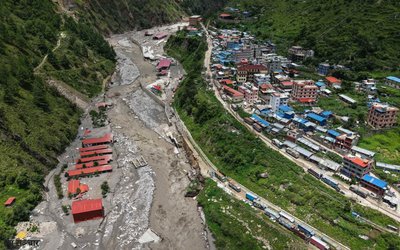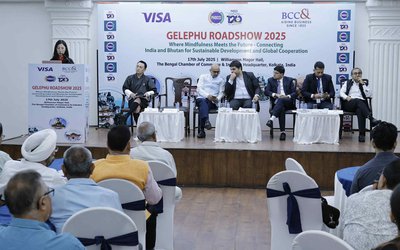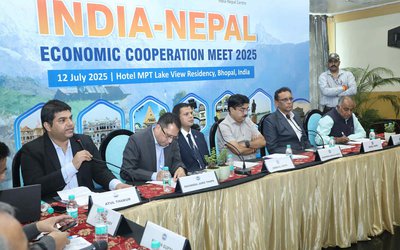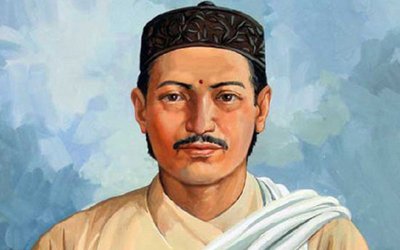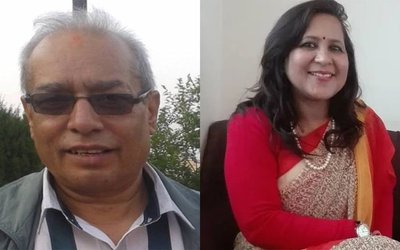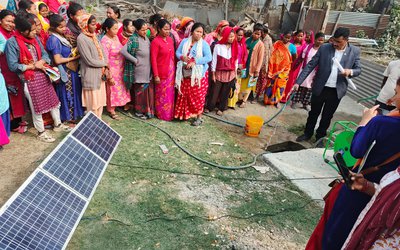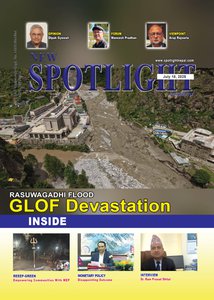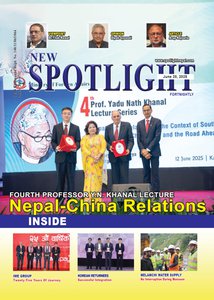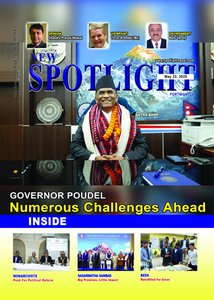
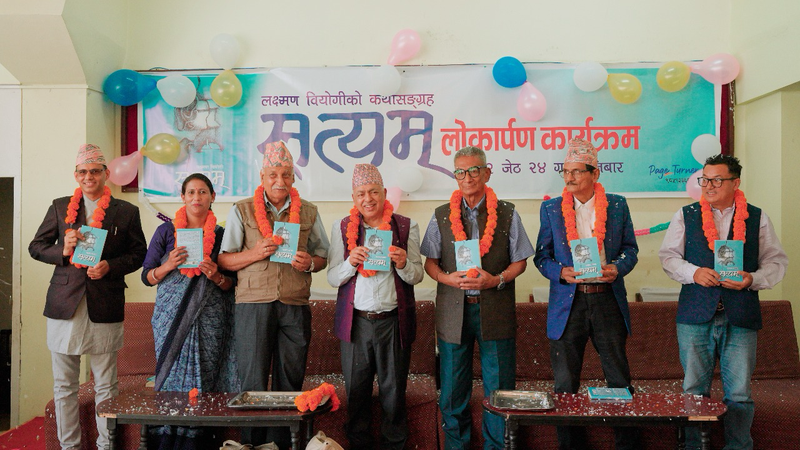
Journalist Laxman Biyogi's story collection unveiled amid a program
‘Satyam’ – the first story collection by writer Laxman Biyogi, launched
Story collection ‘Satyam’ by writer Laxman Viyogi released
Journalist and writer Laxman Biyogi brings out the story collection ‘Satyam’
The story collection Satyam by writer and journalist Laxman Biyogi has been officially released. The unveiling took place during a program organized on Saturday at the Nepal Academy (Nepal Pragya Pratisthan).
The book was jointly launched by Prof. Dr. Dayaram Shrestha, Prof. Dr. Govindraj Bhattarai, critics Dr. Ashok Thapa and Anupama Regmi, as well as Sahitya Akademi (India) award-winning critic Gyan Bahadur Kshetri, along with the author himself.
Speaking at the launch, Prof. Dr. Shrestha said that the birth of Biyogi’s new story collection Satyam not only added to the number of literary works in Nepali literature, but it also brought forth an excellent set of stories that are likely to leave a lasting impression on readers.
Prof. Dr. Bhattarai described Satyam as a brilliant and impactful collection, expected to make a mark among literature enthusiasts.
Critic Dr. Thapa highlighted how Biyogi, being a journalist, has captured themes that cannot be expressed through regular news reporting or feature writing, effectively portraying them through fiction. He pointed out that the collection exposes the harsh realities of a society where untruth overshadows truth, revealing class-based suffering and social realities.
The collection also addresses themes such as family disintegration, foreign employment, and its impacts on society. Dr. Thapa noted that Biyogi, someone with a background in mathematics and journalism — both fact-driven fields — has intriguingly ventured into the emotional and abstract domain of literature.
Critic Anupama Regmi mentioned that Satyam portrays themes such as the Maoist conflict, the use of local dialects, Western Nepali folk songs and culture, love, and environmental issues with deep emotional undertones.
She added, “There’s a depiction of how, during the Maoist conflict, village locals who worked all day would gather at night to sing and dance in the ‘Rodhi’ houses – that entire social atmosphere has now transformed. The use of local dialects such as Tharu and Gurung, and the incorporation of folk melodies and local settings, is powerful.” She emphasized that the story collection has embraced a new literary style.
Similarly, critic and Sahitya Akademi awardee Kshetri recalled how Biyogi had already made his mark as a successful lyricist through his song ‘Himal Lai Dhakyo Kanchha Hiu’nko Puchhauri le…’. He noted that Biyogi’s multifaceted talent is now being vividly expressed through fiction.
While marking the birth of his debut story collection, author Biyogi became emotional as he fondly remembered his late parents. He expressed hope that he continues to receive their blessings from what we commonly refer to as “heaven.” He gratefully acknowledged the support and guidance of his senior mentors and well-wishers, stating that it was only because of them that he was able to create this literary work.
“Whether or not I become a writer or a storyteller is not what matters most,” he said. “What matters is that so many people supported me—and it is because of that guidance that I am here today. I am thankful to everyone. I don’t need to introduce Satyam; rather, I hope Satyam will introduce me.”
Though he has written essays, travelogues, poems, and songs in the literary field, Satyam is his first published story collection.
As critics noted, Biyogi’s stories particularly explore the linguistic beauty and sociocultural texture of western Nepal, especially the Syangja district in the Gandaki watershed, within the backdrop of the Maoist insurgency. His realistic stories delve into themes of social discrimination, inequality, and the tragedies of the civil conflict. The program highlighted how the collection also evokes melodies of folk tunes from his childhood and carries the fragrance of local culture. While rooted in the hills of Syangja, his narratives travel across mid-western, far-western, and eastern regions of Nepal.
Critic Dr. Thapa pointed out that the core of his stories reflects environmental awareness and material realism.
With nearly two decades of experience in journalism, Viyogi has worked with several prominent dailies and weeklies such as Nepal Samacharpatra and Nagarik Daily. He currently serves as the editor of Urja Khabar, Nepal’s first energy-focused online and biannual publication. Deeply passionate about literature, he primarily writes short stories and essays.
His essay Koronako Karkha (Corona’s Curse) won first place in the “Kavidanda National Essay Competition 2078 (2021),” while his short story Tauko (The Head) secured second place in the first edition of the “Dish Home-Bahakhari Nationwide Open Story Competition.” That award-winning story is also included in the current collection. Additionally, Viyogi has penned around a dozen modern and folk-modern songs that have been recorded.
Published by Page Turner Pvt. Ltd., the collection includes 15 stories and is priced at NPR 455. The publisher has so far brought out about three dozen literary works.
- Nepal Investment Mega Bank Limited Launches 'Instant EMI' Facility For the First Time in Nepal
- Jul 30, 2025
- GIZ 50 Years Partnership: Energizing Nepal’s Energy Sector
- Jul 30, 2025
- Prime Minister Inaugurates Rani Jamara Kulariya Irrigation Three Years After Completion
- Jul 30, 2025
- Nepal-India Border Working Group Meeting Agree On Inspection And Maintenance e Work Of Pillar
- Jul 30, 2025
- Weather Forecast: Generally Cloudy Across The Country Possibility Of Moderate Rain In Hilly Regions Inclding Sudurpaschim Province
- Jul 30, 2025

